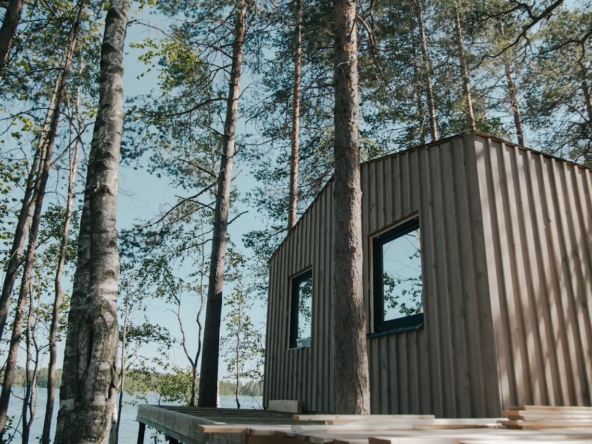We’ve all heard it: Real estate is crazy expensive. Ontario’s market is no exception. But here’s a thought—what if I told you that a modular home might be your ticket to affordable, high-quality living? These aren’t cookie-cutter houses slapped together overnight. Think of them as smartly engineered homes you can customize, assemble efficiently, and (bonus) save on construction costs. But, of course, there’s always a catch… financing.
Prefab home financing is a bit of a different beast compared to traditional home loans. Let’s break it down and discover some innovative ways to get your project funded. It’s all about strategy.
Why Financing Modular Homes Isn’t Like a Standard Mortgage (And Why That’s OK)
Imagine this: You’re standing in an empty field where your dream home should be. Instead, your house is being built in a factory a few towns over. Doesn’t sound like something banks love lending on, right? Exactly. Since they prefer tangible, collateral-backed loans, modular home buyers sometimes hit roadblocks. The home technically “doesn’t exist” during the early construction phase, which gives banks cold feet.
So here’s what typically happens:
- You apply for construction financing to cover costs like materials and labor.
- Once the home’s fully installed and approved, you roll that over into a traditional mortgage.
This process isn’t unique to prefab homes in Ontario, but it does add an extra layer of complexity. That’s why many buyers are pivoting to alternative, innovative options. Because, you know what? Life’s too short to fight with inflexible lenders.
Traditional Financing Is Evolving, But Slowly
In Ontario, mainstream lenders are still playing catch-up with the modular trend. You’ll hear about things like bridge loans and draw mortgages, which aren’t new but can be useful. Here’s how they work:
- Bridge Loans: Think of these as temporary solutions to “bridge” the gap between construction and long-term financing. They can be a lifesaver, but timing matters since you’ll eventually need a permanent mortgage.
- Draw Mortgages: This type releases funds at specific stages of construction—say, after the foundation is laid or walls are raised. It’s a way to pace your spending, but it requires close coordination with your builder and bank.
While helpful, these options may not always offer the best flexibility or rates. It’s like wearing a pair of jeans that almost fit—not exactly ideal.
Specialized Loans aka Financing Built for Modular Projects
This is where things get exciting. Some lenders are finally recognizing that modular homes are the future of efficient housing. They’ve rolled out loan products designed specifically for this purpose. Why does that matter? Because these loans take your unique needs into account.
Here’s a taste of what’s available:
- Progressive Payment Loans: As your home hits key milestones, funds are unlocked (think of it as leveling up in a video game). This ensures you’re only borrowing what you need, when you need it.
- Land-Backed Loans: Already own the land for your modular home? Perfect. Some lenders use it as collateral, which can reduce your borrowing costs.
Working with a lender who understands modular builds isn’t just convenient—it’s a sanity-saver. You won’t have to explain, “No, my house isn’t ‘missing,’ it’s just being built off-site.”
The Private Path aka Credit Unions and Alternative Lenders
Sometimes, you need to take the road less traveled. If banks aren’t rolling out the red carpet, credit unions and private lenders might be your best bet. They tend to offer more flexibility and are often less risk-averse.
A few options to explore:
- Short-Term Construction Loans: These can cover your build costs with plans to refinance into a mortgage once your home’s complete.
- Private Lending Agreements: These might have higher interest rates, but they often come with perks like quicker approvals and lower paperwork burdens.
Just remember: If it sounds too good to be true, it probably is. Vet your lenders carefully, and be sure to negotiate terms you’re comfortable with.
The Five-Step Game Plan to Secure Your Financing
So, how do you actually get one of these loans without feeling like you’re stuck in endless red tape? Easy. You plan, research, and get a few key players on your side.
- Start with research: Not all lenders are created equal. Some specialize in modular financing and will give you fewer headaches.
- Craft a killer project plan: Include detailed timelines, blueprints, and cost estimates. Lenders love to see that you’ve done your homework.
- Weigh your loan options: Compare traditional mortgages, progressive loans, and private offerings.
- Lock in land ownership: If you already own the land, you’re ahead of the game. If not, this should be one of your first moves.
- Bring in the experts: Builders, brokers, and even legal advisors can help you navigate local regulations and financing quirks.
Think of these steps as your financial checklist—tick them off one by one, and you’ll be ready to break ground.
Here’s the Bottom Line
Modular homes are shaking up Ontario’s housing market, offering an affordable and efficient way to build. But financing can be tricky if you don’t know the landscape. Thankfully, with innovative loan products, adaptable lenders, and a solid game plan, you can make your dream home happen.
So the next time someone says, “You’re building what?” smile and tell them you’ve got it all figured out.



